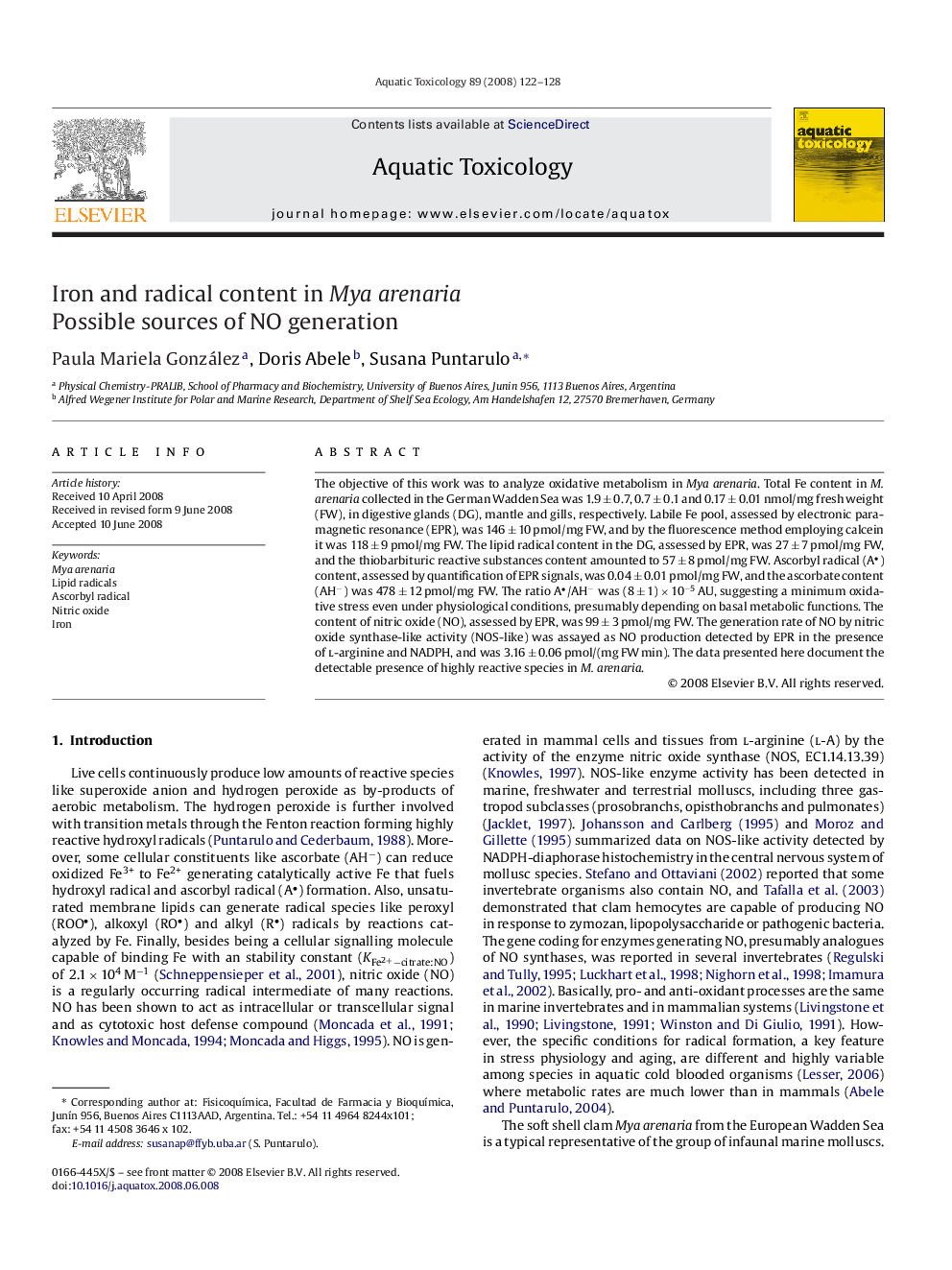| Article ID | Journal | Published Year | Pages | File Type |
|---|---|---|---|---|
| 4530720 | Aquatic Toxicology | 2008 | 7 Pages |
Abstract
The objective of this work was to analyze oxidative metabolism in Mya arenaria. Total Fe content in M. arenaria collected in the German Wadden Sea was 1.9 ± 0.7, 0.7 ± 0.1 and 0.17 ± 0.01 nmol/mg fresh weight (FW), in digestive glands (DG), mantle and gills, respectively. Labile Fe pool, assessed by electronic paramagnetic resonance (EPR), was 146 ± 10 pmol/mg FW, and by the fluorescence method employing calcein it was 118 ± 9 pmol/mg FW. The lipid radical content in the DG, assessed by EPR, was 27 ± 7 pmol/mg FW, and the thiobarbituric reactive substances content amounted to 57 ± 8 pmol/mg FW. Ascorbyl radical (A) content, assessed by quantification of EPR signals, was 0.04 ± 0.01 pmol/mg FW, and the ascorbate content (AHâ) was 478 ± 12 pmol/mg FW. The ratio A/AHâ was (8 ± 1) Ã 10â5 AU, suggesting a minimum oxidative stress even under physiological conditions, presumably depending on basal metabolic functions. The content of nitric oxide (NO), assessed by EPR, was 99 ± 3 pmol/mg FW. The generation rate of NO by nitric oxide synthase-like activity (NOS-like) was assayed as NO production detected by EPR in the presence of l-arginine and NADPH, and was 3.16 ± 0.06 pmol/(mg FW min). The data presented here document the detectable presence of highly reactive species in M. arenaria.
Related Topics
Life Sciences
Agricultural and Biological Sciences
Aquatic Science
Authors
Paula Mariela González, Doris Abele, Susana Puntarulo,
